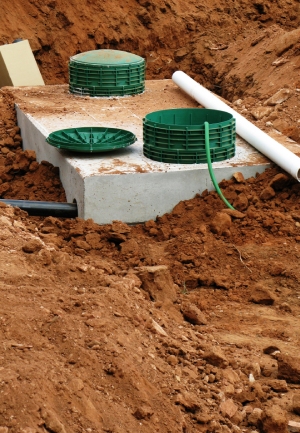 In North Carolina, over 50% of homeowners rely on septic systems for wastewater management. Given the high figures, it’s no wonder that the Department of Health and Human Services has rigorous guidelines in place to regulate the location and placement of septic tank installations.
In North Carolina, over 50% of homeowners rely on septic systems for wastewater management. Given the high figures, it’s no wonder that the Department of Health and Human Services has rigorous guidelines in place to regulate the location and placement of septic tank installations.
Here are some of the guidelines:
- Soil Wetness and Depth. Soil properties largely dictate site suitability for a septic tank installation. Tanks require relatively dry, deep, permeable soil for proper drainage into the subsurface. The regulations prohibit installations on wetlands, fill soils, or any areas where the groundwater/soil wetness is less than 36 inches below the natural soil surface. Generally, the site should also have at least 36 inches of suitable soil before reaching restrictive layers.
- Tank Size Relative to Home Size. Residential septic tanks must be able to handle at least 240 gallons of wastewater flow in a day. This figure varies based on the number of bedrooms in your home. For instance, a 3-bedroom house will require a 900-gallon tank, while a 5-bedroom house will need a 1,250-gallon tank.
- Tank Setback. Setbacks indicate how far tanks must sit from buildings, property lines, wells, and surface waters. Some common setback rules include the following:
- At least 100 feet from water sources.
- At least 20 feet from the nitrification field.
- At least 10 feet from property lines.
- At least 5 feet from your home’s foundation.
We’ve Got You Covered
We understand that it can be overwhelming to follow all these guidelines, which is why we are here to help. At John E. Byrd, Jr. Trucking and Tractor Service LLC, we handle the entire septic tank installation process for you, and we ensure regulatory compliance in every step of the process. Contact us today to learn more about our services.


